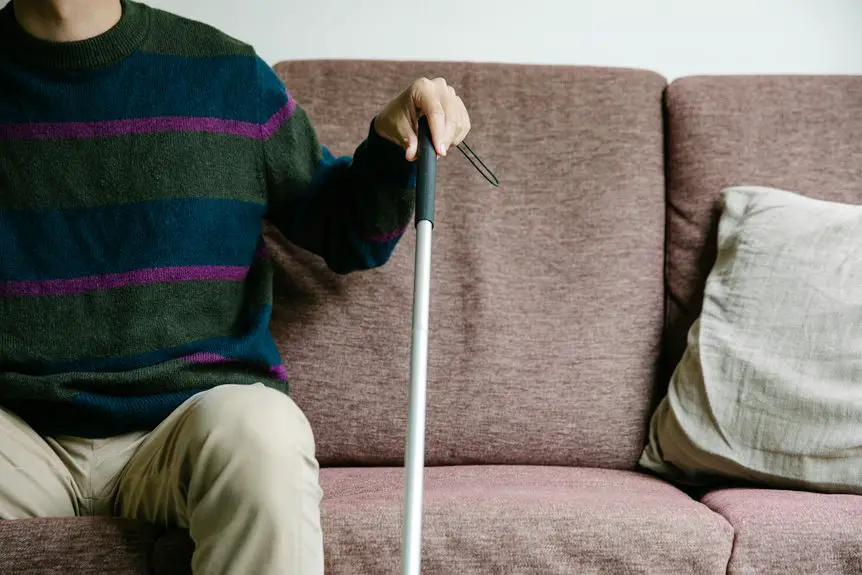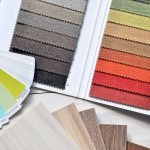Nonwoven fabrics are made by bonding fibers without weaving, giving you strong, flexible, and lightweight materials ideal for many uses. You’ll find spunbond types in medical masks for durability and breathability, while meltblown fabrics offer fine filtration for protective gear. Needle punching and hydroentanglement create tough or soft textiles, and thermal bonding adjusts strength with heat. These fabrics power everything from cleaning wipes to fashion, and there’s plenty more to discover about their benefits and uses.
Table of Contents
Key Takeaways
- Nonwoven fabrics are bonded fibers made without weaving or knitting, using mechanical, chemical, or thermal methods.
- Spunbond fabrics are durable, breathable, and made from continuous filaments, commonly used in medical and hygiene products.
- Meltblown fabrics have ultra-fine fibers with excellent filtration, ideal for masks and air filters.
- Needle punching, hydroentanglement, and thermal bonding are key manufacturing processes for different nonwoven fabric types.
- Nonwoven fabrics vary by strength, absorbency, breathability, and flexibility, tailored to specific applications like cleaning, medical, and apparel.
What Are Nonwoven Fabrics?
Nonwoven fabrics are materials made by bonding fibers together without weaving or knitting. Instead of interlacing threads, you use mechanical, chemical, or thermal methods to hold fibers in place. This process creates a fabric that’s strong, flexible, and often lightweight.
When you work with nonwoven fabrics, you’ll notice they can be produced quickly and in various thicknesses and textures. They’re designed for specific purposes, like filtration, hygiene products, or insulation. You don’t have to worry about unraveling edges since these fabrics don’t have traditional seams.
Key Properties of Nonwoven Materials
Understanding the key properties of these fabrics helps you choose the right material for your project. Nonwoven materials vary in strength, flexibility, and absorbency, influencing their suitability. You’ll also want to take into account durability and breathability depending on the application. Here’s a quick overview to guide your selection:
| Property | Description | Impact on Use |
|---|---|---|
| Strength | Resistance to tearing and stress | Essential for durability |
| Absorbency | Ability to soak up liquids | Important for hygiene items |
| Breathability | Air and moisture permeability | Critical for comfort |
Spunbond Nonwoven Fabric Explained
You’ll find spunbond nonwoven fabric is made by extruding continuous filaments that bond together to form a strong, lightweight material.
This process gives it durability and breathability, making it ideal for products like medical masks, hygiene items, and reusable bags.
Let’s look closer at how this fabric is made and where it’s commonly used.
Manufacturing Process Overview
Although it might seem complex at first, the spunbond manufacturing process is straightforward once you break it down. You start by melting polymer granules, which are then extruded through tiny spinnerets to form continuous filaments. These filaments are laid randomly on a conveyor belt, where they cool and bond to form a web. Finally, the web passes through heated rollers to strengthen the fabric.
Here’s a quick overview:
| Step | Description |
|---|---|
| Polymer Melting | Granules melt into liquid form |
| Filament Extrusion | Liquid polymer forms fine strands |
| Web Formation | Strands cool and bond into fabric |
This process produces durable, lightweight nonwoven fabric efficiently.
Common Applications
Because spunbond nonwoven fabric combines strength with lightweight properties, it finds use in a wide range of everyday products.
You’ll see it in medical supplies like surgical gowns and masks, where durability and breathability matter. It’s also common in hygiene items such as diapers and sanitary pads, providing comfort while maintaining shape.
In agriculture, you can use spunbond fabric as crop covers to protect plants from pests and weather.
When it comes to packaging, it offers a reusable, eco-friendly alternative for bags and protective wraps.
Even in home furnishings, it serves as upholstery backing or mattress covers.
Understanding these applications helps you appreciate how versatile spunbond nonwoven fabric truly is, impacting your daily life in numerous subtle but essential ways.
Meltblown Nonwoven Fabric and Its Uses
Meltblown nonwoven fabric stands out for its ultra-fine fibers and exceptional filtration capabilities. When you use it, you benefit from its high surface area, which traps tiny particles efficiently. This fabric is key in medical masks, air filters, and even oil absorbents. Its lightweight and breathable nature make it ideal for protective gear and hygiene products.
| Feature | Benefit | Common Use |
|---|---|---|
| Ultra-fine fibers | High filtration efficiency | Face masks |
| Lightweight | Comfortable and breathable | Medical gowns |
| Absorbent | Captures oils and liquids | Oil spill cleanup |
You’ll find meltblown fabric essential when you need reliable filtration combined with comfort and durability.
Needle Punching: Creating Durable Nonwovens
While meltblown fabric offers excellent filtration and softness, needle punching takes a different approach to nonwoven fabric production.
You create durable, strong fabrics by mechanically entangling fibers with barbed needles. These needles punch repeatedly through a fiber web, interlocking the fibers without adhesives or heat.
This process results in a fabric that’s thicker and more robust, ideal for applications like carpet backing, geotextiles, and automotive interiors.
You’ll find needle-punched nonwovens offer great resilience and dimensional stability, making them perfect when durability matters most.
Plus, you can use a variety of fibers, including natural and synthetic blends, to customize the fabric’s properties.
Needle punching is a straightforward, versatile method that lets you produce tough nonwoven fabrics suited for heavy-duty uses.
Understanding Hydroentanglement Process
If you want a nonwoven fabric that combines softness with strength, hydroentanglement might be the process you’re looking for. This technique uses high-pressure water jets to entangle fibers, creating a fabric without adhesives or thermal bonding.
You’ll find it especially useful for applications needing a textile feel with durability.
Here’s what makes hydroentanglement stand out:
- Uses fine water jets to interlock fibers mechanically
- Produces soft, flexible, and strong fabrics
- Ideal for wipes, medical dressings, and hygiene products
- Avoids chemical binders, making it eco-friendly
Thermal Bonded Nonwoven Fabrics
Hydroentanglement creates strong, soft fabrics without adhesives, but sometimes you need a different bonding method to achieve specific performance or cost goals. Thermal bonded nonwoven fabrics use heat to bond fibers, often with the help of thermoplastic binders. This process gives you fabrics that are durable, lightweight, and cost-effective. You can control fabric strength and flexibility by adjusting temperature and pressure during bonding.
| Feature | Advantage | Typical Use |
|---|---|---|
| Heat-activated | Strong fiber bonding | Hygiene products |
| Thermoplastic binders | Lightweight | Filters |
| Adjustable strength | Cost-efficient | Medical disposables |
| Quick production | Consistent quality | Industrial wipes |
Thermal bonding is perfect when you want reliable strength and uniformity without added chemicals.
Applications of Nonwoven Fabrics in Everyday Life
You use nonwoven fabrics more than you might realize, from cleaning wipes in your kitchen to medical masks and hygiene products.
They’re also key in apparel, offering lightweight and breathable options in fashion.
Let’s explore how these fabrics fit into your daily life.
Household Cleaning Uses
Although nonwoven fabrics mightn’t be the first material you think of for cleaning, they play a crucial role in household chores. You’ll find nonwoven materials in many everyday cleaning products because they’re lightweight, absorbent, and durable.
These fabrics make your tasks easier and more effective. For example, when you wipe surfaces or mop floors, nonwovens help trap dust and dirt without scratching. They also dry quickly, so you’re less likely to deal with soggy messes.
Here are some common household cleaning uses:
- Disposable cleaning wipes that kill germs and pick up debris
- Dusting cloths that attract and hold dust particles
- Mop pads designed for easy cleaning and replacement
- Sponges with nonwoven layers for scrubbing without damage
Using nonwoven fabrics means you get efficient, hassle-free cleaning every time.
Medical and Hygiene Products
When it comes to medical and hygiene products, nonwoven fabrics offer unmatched benefits that keep you safe and comfortable.
You’ll find these fabrics in surgical gowns, masks, and drapes, where their barrier properties protect against bacteria and fluids. They’re lightweight, breathable, and disposable, which reduces infection risks and enhances hygiene.
In personal care, nonwovens are essential in diapers, sanitary pads, and wipes, providing absorbency and softness that you rely on daily. Thanks to their strength and flexibility, they fit your needs without irritation.
Plus, manufacturers can tailor these fabrics to meet specific performance standards, so you get reliable protection and comfort every time. Nonwovens truly play a crucial role in maintaining your health and cleanliness effortlessly.
Apparel and Fashion Uses
Beyond medical and hygiene products, nonwoven fabrics have made a significant mark in apparel and fashion.
If you’re exploring innovative materials, nonwovens offer versatility, affordability, and unique textures that designers love. You’ll find these fabrics in various clothing and accessory applications, providing comfort and style without compromising durability.
Here’s where you’ll commonly see nonwoven fabrics in fashion:
- Interlinings that add structure to garments without bulk
- Disposable fashion items like party hats and shoe covers
- Eco-friendly bags and totes that are lightweight and strong
- Textile backings that reinforce seams and hems
Environmental Impact and Sustainability of Nonwovens
Since nonwoven fabrics are widely used across various industries, understanding their environmental impact and sustainability is crucial.
You should know that many nonwovens are made from synthetic fibers like polypropylene, which come from fossil fuels and can take years to decompose.
However, the industry is evolving. You’ll find biodegradable options made from natural fibers such as cotton or bamboo gaining popularity.
Plus, some manufacturers use recycled materials to reduce waste.
When you choose nonwovens, consider products certified for eco-friendliness or those designed for recyclability.
Also, remember that nonwovens often require less water and energy to produce than woven fabrics, which can be a sustainability advantage.
Frequently Asked Questions
How Do Nonwoven Fabrics Compare Cost-Wise to Woven Fabrics?
Imagine weaving a budget-friendly tapestry; nonwoven fabrics usually cost less than woven ones because you’re skipping the complex threading process. You’ll save money while getting versatile fabric, perfect for many practical uses.
Can Nonwoven Fabrics Be Recycled at Home?
You typically can’t recycle nonwoven fabrics at home because they often contain mixed fibers or bonding agents. Instead, check local recycling programs or consider reusing them creatively to reduce waste effectively.
What Are the Best Nonwoven Fabrics for Medical Use?
You’ll find spunbond and meltblown nonwoven fabrics best for medical use because they’re breathable, strong, and provide excellent barrier protection. They’re perfect for masks, gowns, and surgical drapes to keep you safe and sterile.
How Is Color Added to Nonwoven Fabrics?
You add color to nonwoven fabrics by incorporating pigments or dyes during fiber production or applying them afterward through printing or dyeing processes. This guarantees vibrant, consistent colors tailored to your specific needs.
Are Nonwoven Fabrics Breathable for Clothing Applications?
Think of nonwoven fabrics as open windows to fresh air; yes, they’re breathable for clothing. You’ll find many designed to let moisture escape, keeping you comfortable while wearing them throughout the day.
- Recycling Nonwoven Fabrics: Is It Possible? - July 11, 2025
- Recycling Nonwoven Fabrics: Is It Possible? - July 11, 2025
- Recycling Nonwoven Fabrics: Is It Possible? - July 11, 2025







